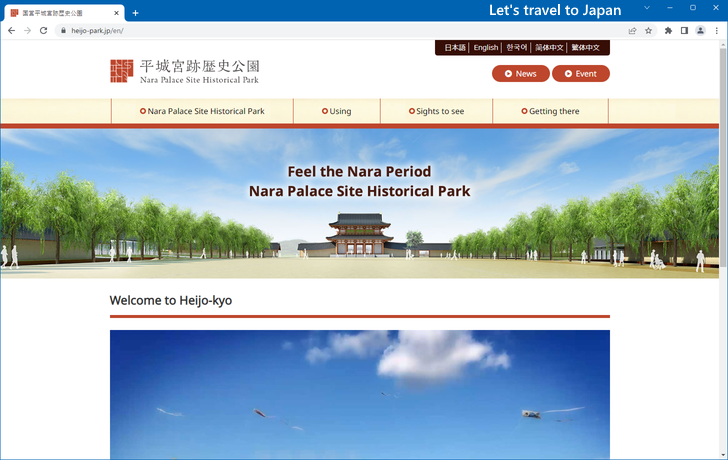Highlights and access methods of Heijo Palace (Nara Prefecture)
In this article, we will explain the attractions of Heijo Palace in Nara Prefecture and how to access it for those who are traveling to Japan from overseas.

(Last modified: )
(Prefecture : Nara , Category : Historical Buildings)
Table of contents
About Heijo Palace
Heij? Palace Site Historical Park, located in Nara, Japan, is a significant historical site that once served as the imperial palace of the ancient capital, Heij?-ky?. Established in the 8th century, the park now features well-preserved ruins, informative exhibits, and beautifully maintained gardens. As a UNESCO World Heritage Site, it offers visitors a unique opportunity to explore and learn about Japan's early history and rich cultural heritage.
Highlights of Heijo Palace
Heijo Palace Historical Park, located in Nara, Japan, is a fascinating attraction for foreign tourists due to its historical significance and picturesque setting. As the site of the ancient Heijo Palace, the park played a crucial role in Japan's history during the Nara period (710-794). As the imperial residence and political center, the palace represented the power and influence of the Japanese emperor at the time. Today, the park is recognized as a UNESCO World Heritage site, preserving the remains of the palace and providing a glimpse into the life and culture of Japan's past.
Visitors can explore the vast park and its numerous reconstructed buildings, such as the Daigokuden (the imperial audience hall), the Suzaku Gate, and the Toin Teien (the garden of the imperial residence). Throughout the park, there are informative displays and exhibits detailing the history and significance of the palace and the Nara period.
While Heijo Palace Historical Park can be enjoyed throughout the year, spring and autumn are particularly recommended. In spring, the cherry blossoms create a breathtaking landscape, while in autumn, the vibrant colors of the changing leaves provide a stunning backdrop. A visit to Heijo Palace Historical Park offers foreign tourists an enriching experience, connecting them with Japan's rich history and providing a unique opportunity to explore the remnants of a once-grand imperial palace.
Address and access method of Heijo Palace
Heij? Palace Site Historical Park is located at 5-3 Sang?ch?, Nara, 630-8577, Japan.
The nearest train station to the park is Yamato-Saidaiji Station, which is served by the Kintetsu Nara Line and the Kintetsu Kashihara Line. From the station, it is approximately a 15-minute walk to the park entrance. Alternatively, you can take a local bus from the station to the park, which will shorten the travel time.
Attractions near Heijo Palace
Several notable attractions are located near Heijo Palace:
T?dai-ji Temple
A renowned Buddhist temple, home to the Great Buddha Hall, which houses the world's largest bronze statue of the Buddha Vairocana. This temple is a significant historical and cultural site in Nara.
Nara Park
A vast, picturesque park famous for its free-roaming deer population. The park also contains several temples, shrines, and museums, making it a popular destination for tourists.
K?fuku-ji Temple
An important Buddhist temple complex with a five-story pagoda, which is one of Japan's national treasures. The temple grounds also include a beautiful garden and a museum.
Kasuga-taisha Shrine
A prominent Shinto shrine with a serene atmosphere, known for its thousands of stone lanterns lining the pathways. The shrine is designated as a UNESCO World Heritage Site along with other historical monuments in Nara.
Naramachi
A historical neighborhood in Nara featuring preserved merchant houses, traditional streets, and charming shops, offering visitors a glimpse into Japan's past.
These attractions showcase Nara's rich cultural heritage, and visiting them will provide you with a well-rounded experience of the city's historical and natural beauty.
Other information about Heijo Palace
Official site (English version) about Heijo Palace :

-- --
Thank you for reading to the end.
( Written by Tatsuo Ikura )